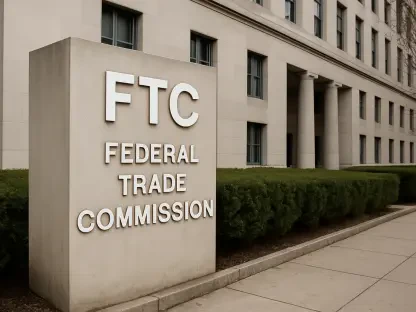In the heart of America’s cattle country, where the scent of grilled beef wafts through summer barbecues, a staggering reality bites hard: the average price of ground beef has skyrocketed to $6.32 per pound, leaving families shelling out more than ever for a simple burger. Frustration is simmering across the nation. Amid this economic crunch, President Trump has tossed a bold idea onto the table—import more beef from Argentina to cool down these sizzling costs. But can this plan deliver relief, or will it carve deeper wounds into the livelihoods of American ranchers?
A Beefy Puzzle: Can Imports Tame Soaring Costs?
The crux of this debate lies in a pressing question: how can the nation balance consumer affordability with the survival of its rural backbone? Beef prices are at historic highs, pinching household budgets across the country. Trump’s proposal to ramp up imports from Argentina has sparked a firestorm, promising potential relief at the checkout counter but threatening the hard-won profits of domestic producers. This isn’t just about meat—it’s about the clash between policy decisions and the gritty realities of farm life.
The stakes couldn’t be higher for millions of Americans. Ranchers, long battling drought and market slumps, finally see a profitable window, yet fear it could slam shut with foreign competition. Meanwhile, consumers are desperate for a break from relentless price hikes. This tension sets the stage for a deeper dive into whether an international solution can truly address a deeply domestic problem.
Why Beef Prices Burn and How Imports Fit In
Behind the staggering cost of beef lies a perfect storm of supply shortages. The U.S. cattle herd is at its smallest since 1961, a consequence of years of harsh weather and unprofitable markets forcing ranchers to scale back. Strong demand from steak-loving Americans, paired with reduced imports from key players like Brazil—hit by 50% tariffs—and Mexico, grappling with pest-related export limits, has only tightened the noose. The result is a market where every pound of beef comes at a premium.
Trump’s push to bring in more Argentine beef aims to plug this gap, positioning it as a lifeline for consumers. Yet, this move stirs unease among ranchers who see it as a betrayal of the “America First” ethos. Beyond the immediate price concerns, this policy taps into broader trade frictions and the struggle of rural communities to stay afloat in a globalized economy, raising questions about long-term sustainability over short-term fixes.
Unpacking the Argentine Import Proposal: Hopes and Hurdles
Digging into the specifics, the scale of Argentine beef’s role in the U.S. market is strikingly small—just 2% of total imports, equating to 72.5 million pounds against a domestic output exceeding 15 billion pounds through mid-year. Even if imports surge, the focus on lean trimmings for ground beef suggests minimal impact on pricier cuts like steak, which average $12.22 per pound. The numbers alone cast doubt on whether this plan can meaningfully dent retail costs.
On the domestic front, the announcement has already rattled markets, with cattle prices dropping over $100 per head—from an average of $3,000 for a 1,250-pound animal—though a partial rebound followed. Ranchers worry this volatility signals worse to come, potentially derailing plans to rebuild herds. Globally, Argentine producers eye opportunity, but even they face risks of local price spikes if exports soar, highlighting structural limits to the plan’s promise.
The core challenge remains: a modest increase in foreign beef may ease some pressure on ground beef costs, but systemic issues like herd size and trade barriers with other exporters loom larger. This policy, while ambitious, seems constrained by realities that no quick import boost can fully address, leaving its effectiveness in question.
On the Ground: Ranchers and Analysts Speak Out
From the rolling plains of South Dakota, rancher Brett Kenzy’s voice carries raw frustration: “Markets, not mandates, should drive this industry.” His sentiment echoes a broader betrayal felt by many in Trump’s rural base, who see the import plan as a direct contradiction to protectionist promises. Industry advocates like Bill Bullard of R-CALF argue the focus should be on expanding domestic herds, not opening floodgates to foreign supply, reflecting a deep-seated distrust of the policy’s intent.
Agricultural economists add a sobering layer of doubt. Glynn Tonsor of Kansas State University warns that the price impact will likely be negligible, given Argentina’s tiny market share and persistent supply bottlenecks elsewhere. David Anderson of Texas A&M concurs, noting that uncertainty from such policies could stall rancher investments. Yet, Agriculture Secretary Brooke Rollins defends the move, hinting at a wider strategy to support both consumers and producers, though skepticism persists among stakeholders.
These clashing perspectives paint a vivid picture of division. Ranchers feel sidelined, experts question feasibility, and policymakers push optimism—leaving the industry at a crossroads where trust and economics collide. The voices from the field underscore a narrative of concern that no amount of official reassurance has fully quelled.
Charting a Path: Options for Consumers and Ranchers
Amid the policy storm, practical steps can help navigate the choppy waters of the beef market. Consumers, squeezed by high costs, might explore alternative proteins like poultry or plant-based options to ease budget strain. Buying in bulk during seasonal discounts or joining local meat shares could also stretch dollars further, offering a buffer while trade debates unfold.
Ranchers, facing an uncertain market, have avenues to adapt as well. Direct-to-consumer sales through farmers’ markets or online platforms can build loyal customer bases insulated from import swings. Advocacy for domestic-focused policies—such as better land access or funding for new processing facilities, as hinted by officials—could strengthen their footing. Staying engaged with evolving trade agreements remains critical to safeguarding their interests.
Both groups stand to gain from informed dialogue and proactive measures. Monitoring market trends and pushing for balanced solutions that prioritize affordability without undermining local production offers a way forward. This dual approach acknowledges the immediate pain of high prices while fostering resilience in an industry under strain.
Reflecting on a Contentious Crossroads
Looking back, the debate over Trump’s Argentine beef import plan revealed a nation wrestling with competing priorities—consumer relief versus the protection of a vital domestic industry. Ranchers stood firm against a policy they saw as a threat to their rare profitability, while economists doubted its power to lower prices like ground beef at $6.32 per pound. The market’s initial shudder, with cattle prices dipping sharply, underscored real fears that lingered despite partial recovery.
Moving ahead, actionable steps emerged as a beacon for progress. Consumers adapted by diversifying protein choices, and ranchers explored local sales to weather uncertainty. Policymakers faced pressure to refine strategies, balancing global trade with domestic needs. A renewed focus on expanding U.S. herds and building infrastructure, as hinted by officials, pointed toward a potential path that could unite stakeholders in rebuilding a stronger, more affordable beef market for all.









